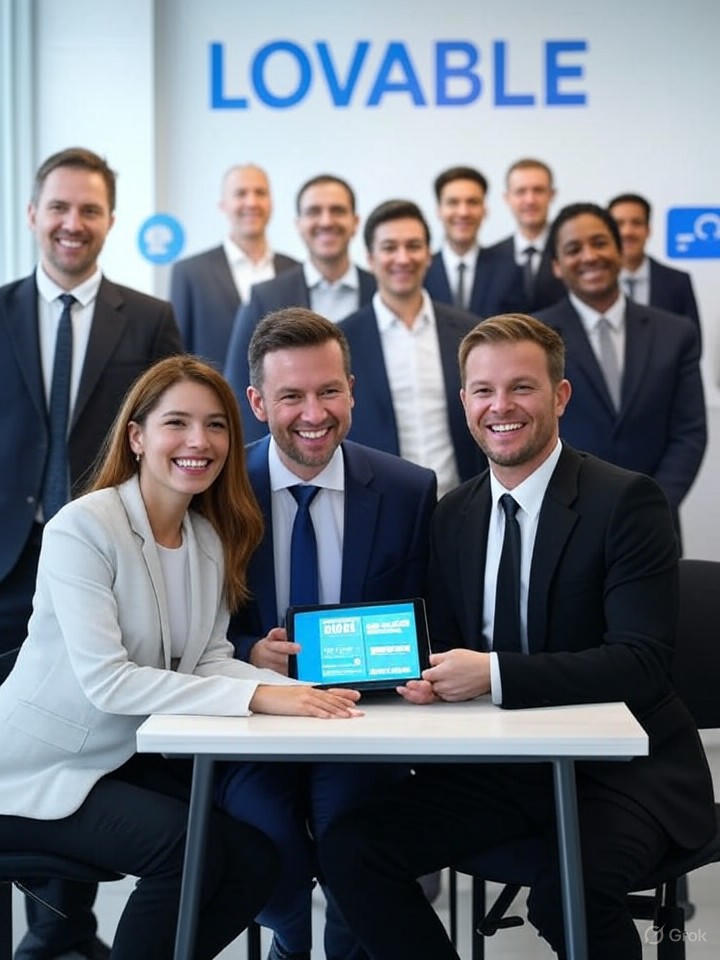In just a year since its debut, Lovable—an AI-powered coding platform—has rapidly gained traction, drawing close to 8 million users worldwide. Originally designed to simplify and accelerate the coding process for individual developers, the startup’s user base now includes a significant number of enterprise teams. With more than half of the Fortune 500 companies reported to be active users, Lovable is quickly becoming a staple tool in corporate digital transformation strategies.
The Rise of Lovable in the AI Coding Ecosystem
Launched only a year ago, Lovable has positioned itself as a powerful solution for developers seeking faster, smarter, and more intuitive coding support. The platform’s success lies in its ability to merge advanced artificial intelligence with a user-friendly interface, allowing developers to streamline project workflows and increase creativity in problem-solving. Since its inception, Lovable has maintained a strong retention rate, signaling not just rapid adoption but also steady satisfaction among its growing user base.
Empowering Creativity Across Fortune 500 Companies
According to Lovable’s founder and CEO, Osika, the platform is being used by teams from over half of the Fortune 500 companies. These enterprises are leveraging Lovable’s capabilities to ‘supercharge creativity’ and reduce the time spent on routine code development tasks. From finance and healthcare to retail and technology sectors, corporate developers are using Lovable to speed up innovation cycles and enhance collaboration between human teams and AI tools.
What makes Lovable attractive to large-scale companies is its scalability and adaptability. The system integrates seamlessly with existing development environments, enabling employees to generate, optimize, and refactor code safely within corporate guidelines. The more companies use it, the more the AI learns from patterns of excellence and collaboration—ultimately leading to higher quality outputs.
How Lovable’s AI Technology Enhances Developer Productivity
Lovable’s core technology uses a combination of deep learning and natural language processing to understand developer prompts and generate accurate, context-based code suggestions. Unlike traditional coding assistants, the platform’s algorithms adapt to each developer’s style, minimizing repetition and standardizing best practices across teams.
Key Features That Drive Adoption:
- Real-time code generation: Developers can produce optimized code blocks instantly, refining logic and syntax with AI assistance.
- Cross-platform integration: Compatible with major IDEs and frameworks, allowing enterprises to embed Lovable directly into their workflows.
- Custom AI models: Teams can train Lovable on proprietary data to ensure output aligns with company-specific architecture and security needs.
- Performance analytics: Provides insights into developer productivity, code efficiency, and potential bottlenecks, driving better team management decisions.
Lovable’s Approach to Sustainable Growth
Reaching nearly 8 million users in just one year is an impressive feat, but Lovable’s growth strategy extends beyond user acquisition. The company has focused heavily on retention, community engagement, and partnerships with enterprise customers. By offering flexible pricing options, tailored onboarding, and dedicated developer support, Lovable aims to ensure that every organization can confidently integrate AI-driven development into its workflow.
Osika has emphasized that retention, not just expansion, is Lovable’s key metric for success. The company’s internal data reportedly shows strong engagement over time, indicating that developers are not only trying the platform but incorporating it into daily operations. This consistent usage reflects the value Lovable provides to both individual coders and large enterprise teams.
Corporate Adoption and the Future of AI in Development
The growing adoption of AI coding assistants like Lovable among corporate teams marks a significant shift in how businesses approach software development. As companies continue to face pressure to innovate faster, AI-driven tools are becoming essential allies in achieving scalability and maintaining competitive advantage. Lovable’s position in this ecosystem mirrors the wider industry trend toward embracing automation—not as a replacement for developers, but as an enhancement to human creativity.
Corporate tech leaders are increasingly prioritizing tools that reduce time-to-market and empower teams. Platforms like Lovable enable engineers to focus on design, strategy, and user experience, while AI handles routine or repetitive coding processes. This symbiotic relationship between human expertise and artificial intelligence is reshaping software development at every level.
Key Challenges Ahead
Despite its successes, Lovable faces challenges typical of any fast-growing tech startup. Data privacy, intellectual property rights, and AI bias management are critical areas that must evolve alongside its growth. Enterprise clients, especially within regulated industries, need assurance that AI-assisted coding adheres to strict security and compliance standards.
To address these concerns, Lovable has been transparent about its compliance frameworks and offers enterprise-level governance options that allow companies to define access, usage, and model-training policies. By doing so, the platform fosters trust—a vital component in expanding within conservative corporate environments.
Looking Ahead: Innovation and Expansion
As Lovable approaches the 8 million user milestone, its focus is increasingly shifting toward enterprise-scale innovation. Future plans include enhanced multilingual coding support, improved natural language interpretation, and expanded integrations with cloud-based DevOps tools. These developments will make Lovable even more relevant for global organizations managing distributed development teams.
The startup’s roadmap also includes partnerships with educational institutions and coding boot camps, ensuring that new developers enter the workforce already familiar with AI-driven coding. This strategy reinforces Lovable’s long-term mission to democratize access to powerful development tools, making software creation more intuitive and accessible to everyone.
Conclusion
Lovable’s journey from a fledgling AI coding startup to a near 8-million-user platform in just a year underscores the transformative potential of artificial intelligence in the software industry. By appealing to both independent developers and Fortune 500 enterprises, Lovable has successfully bridged creativity and efficiency in coding. As AI continues to reshape the development landscape, Lovable’s emphasis on intelligent design, reliable performance, and scalable enterprise solutions positions it as a leader in this rapidly evolving market.
With an ambitious roadmap and steadfast retention, Lovable is not merely changing how code is written—it is redefining what’s possible when human ingenuity meets artificial intelligence.

